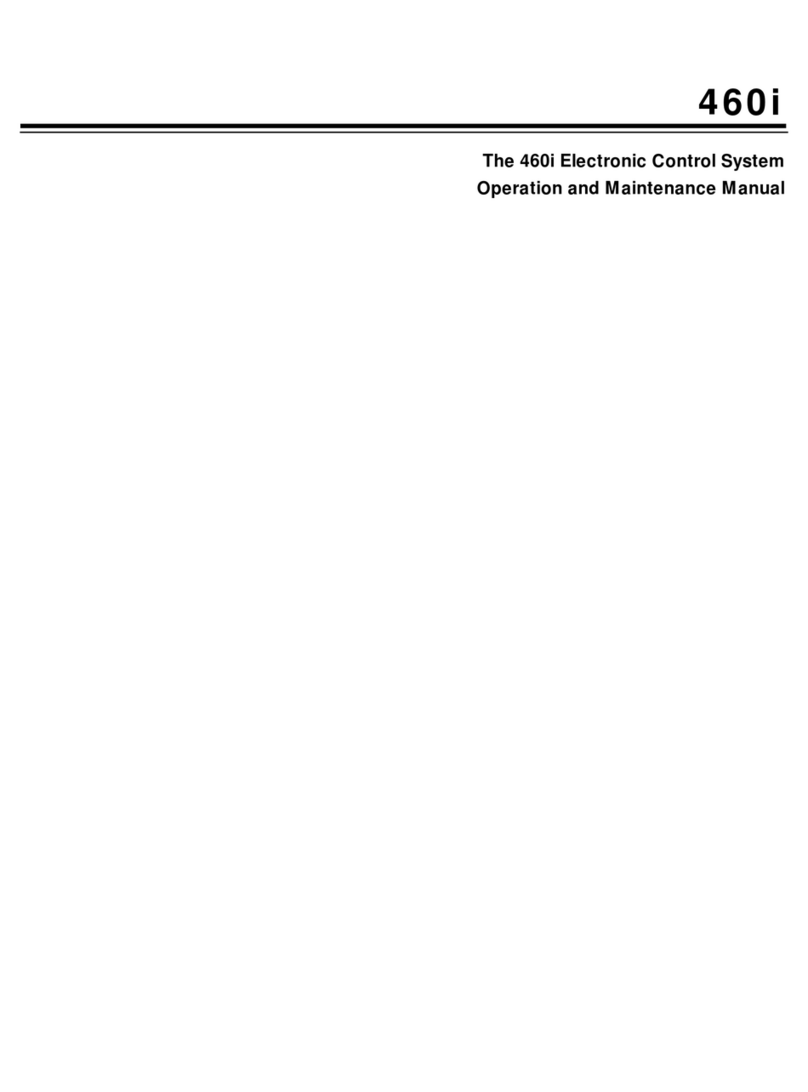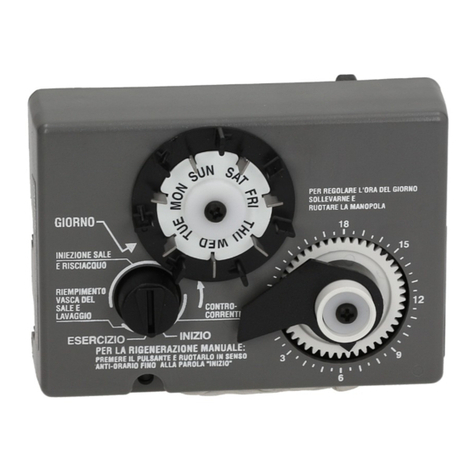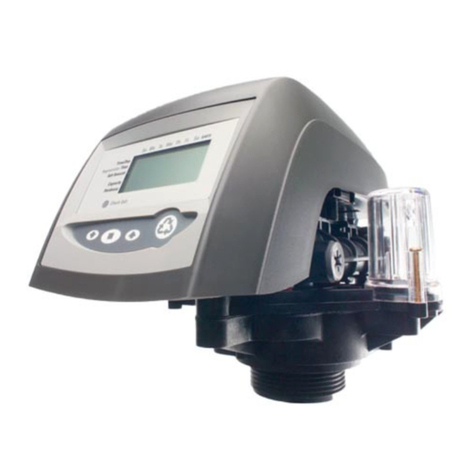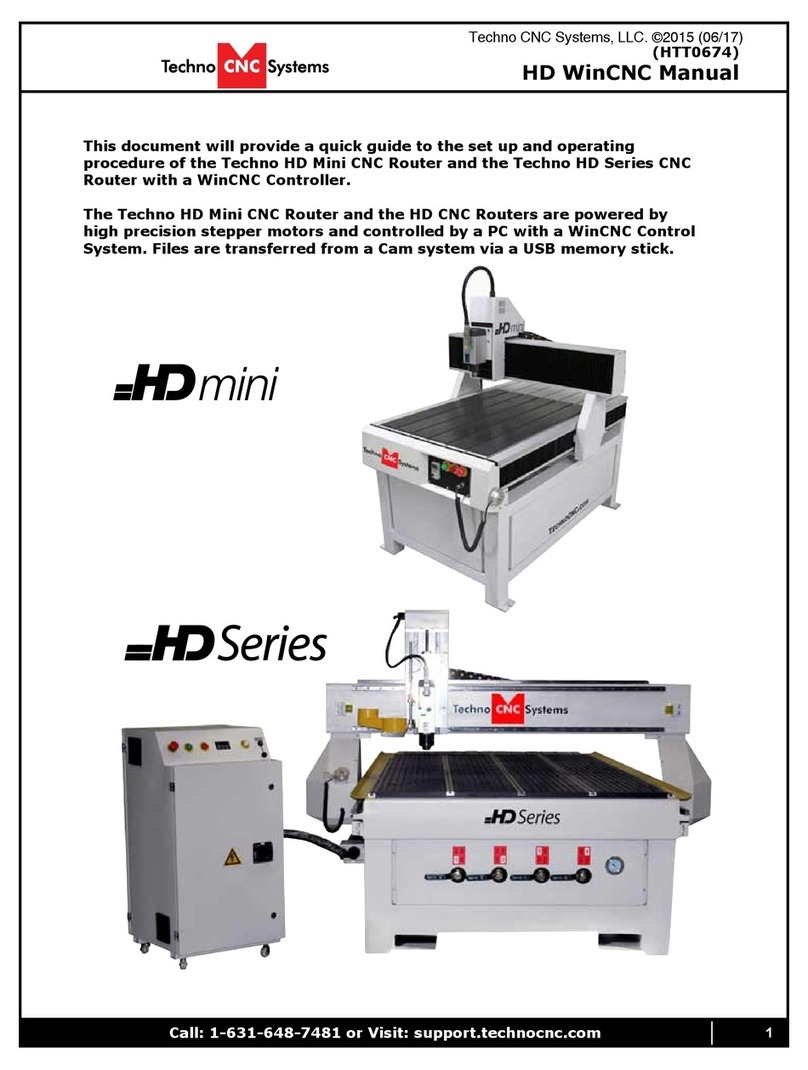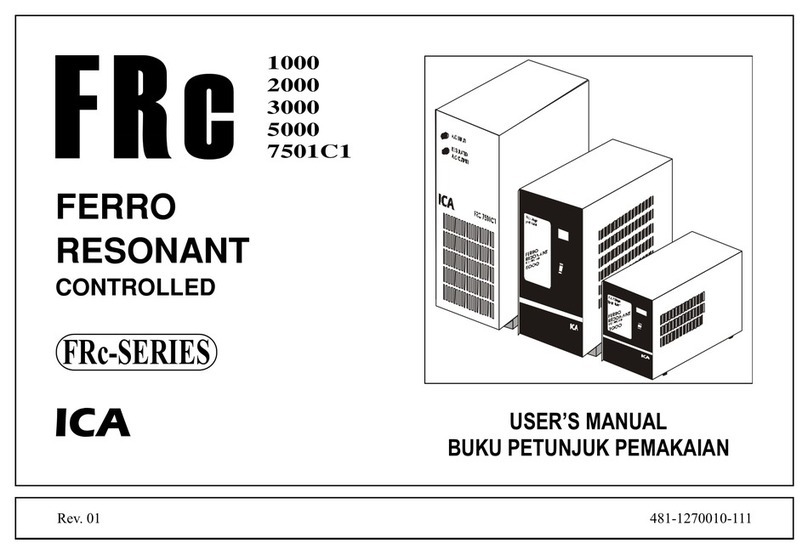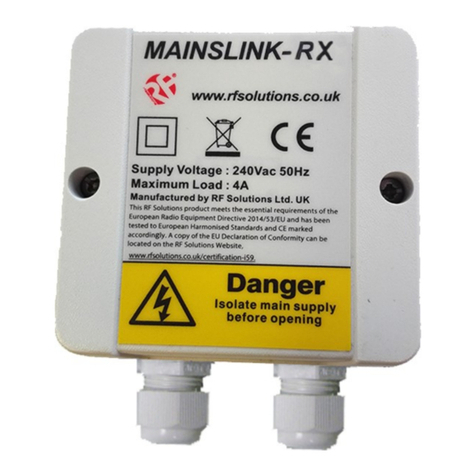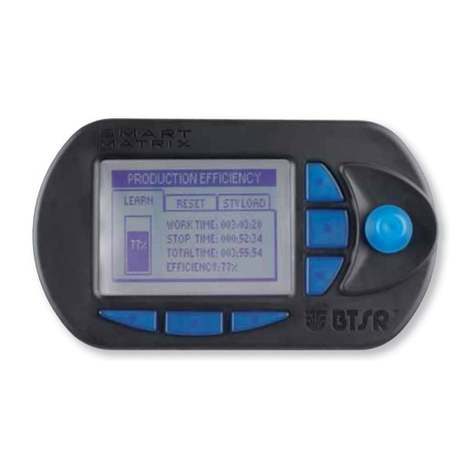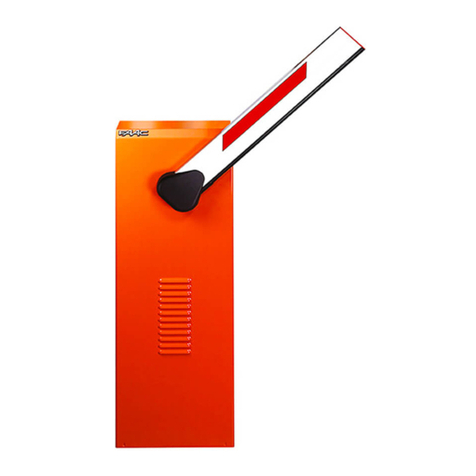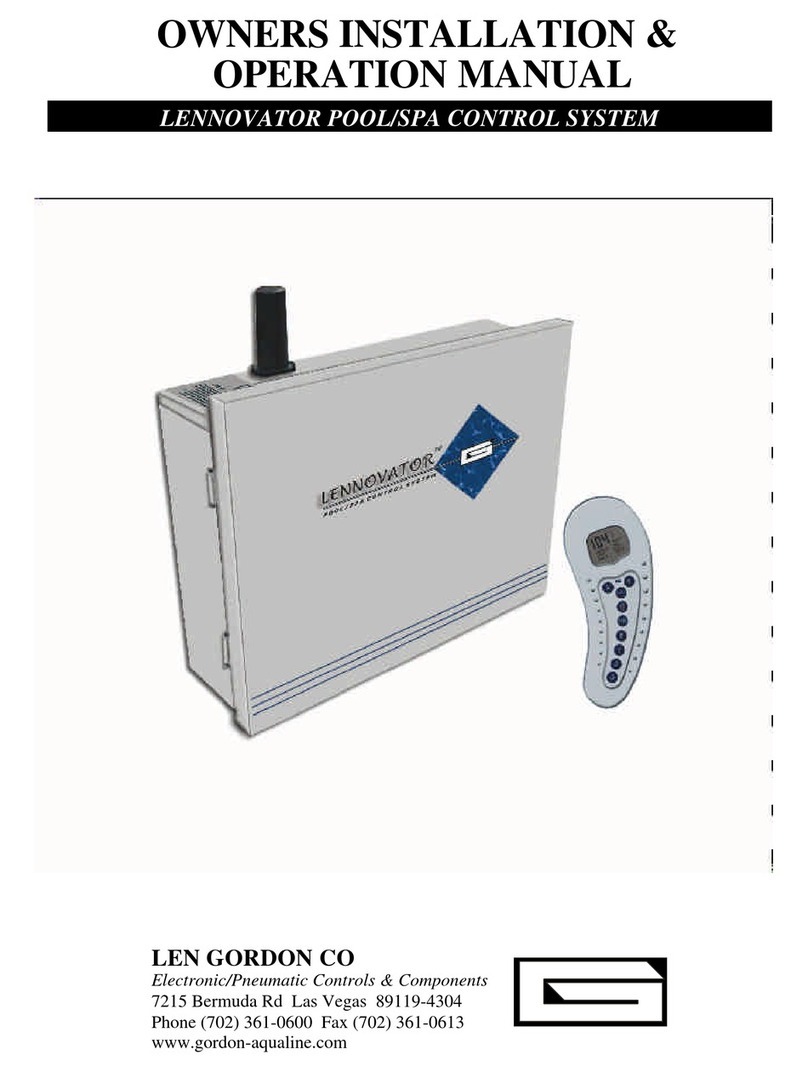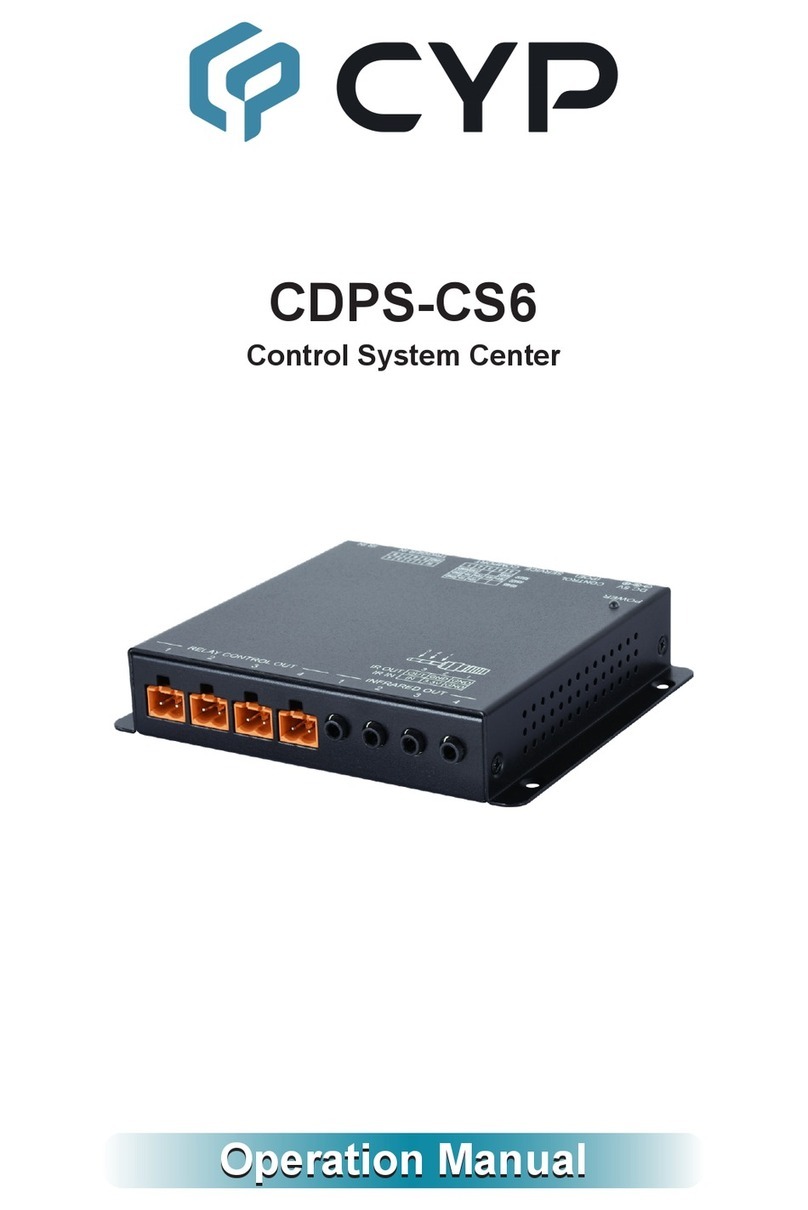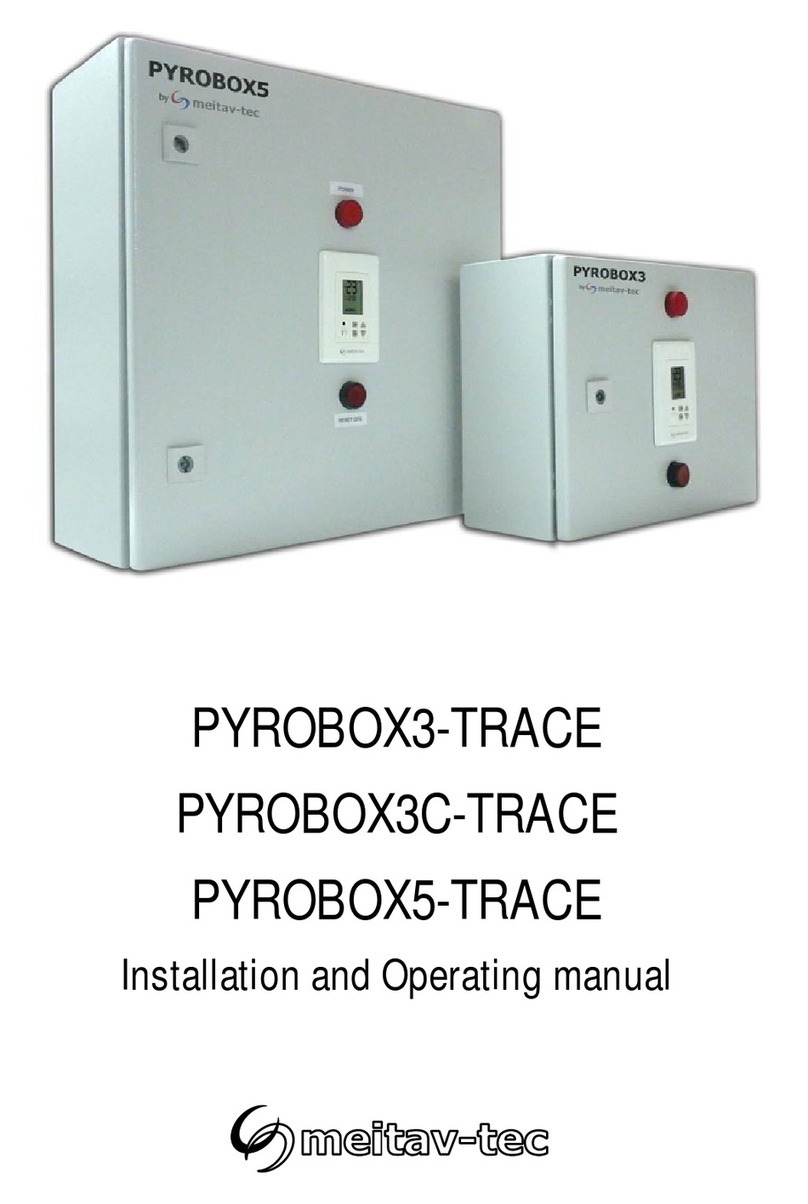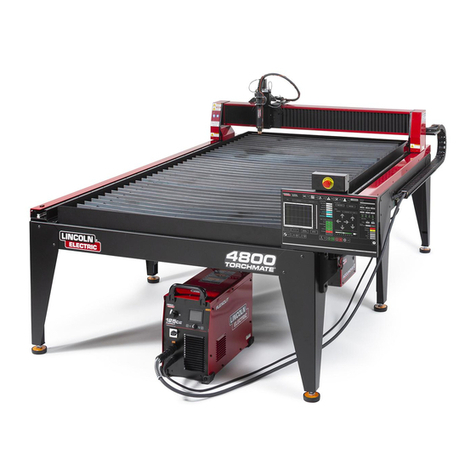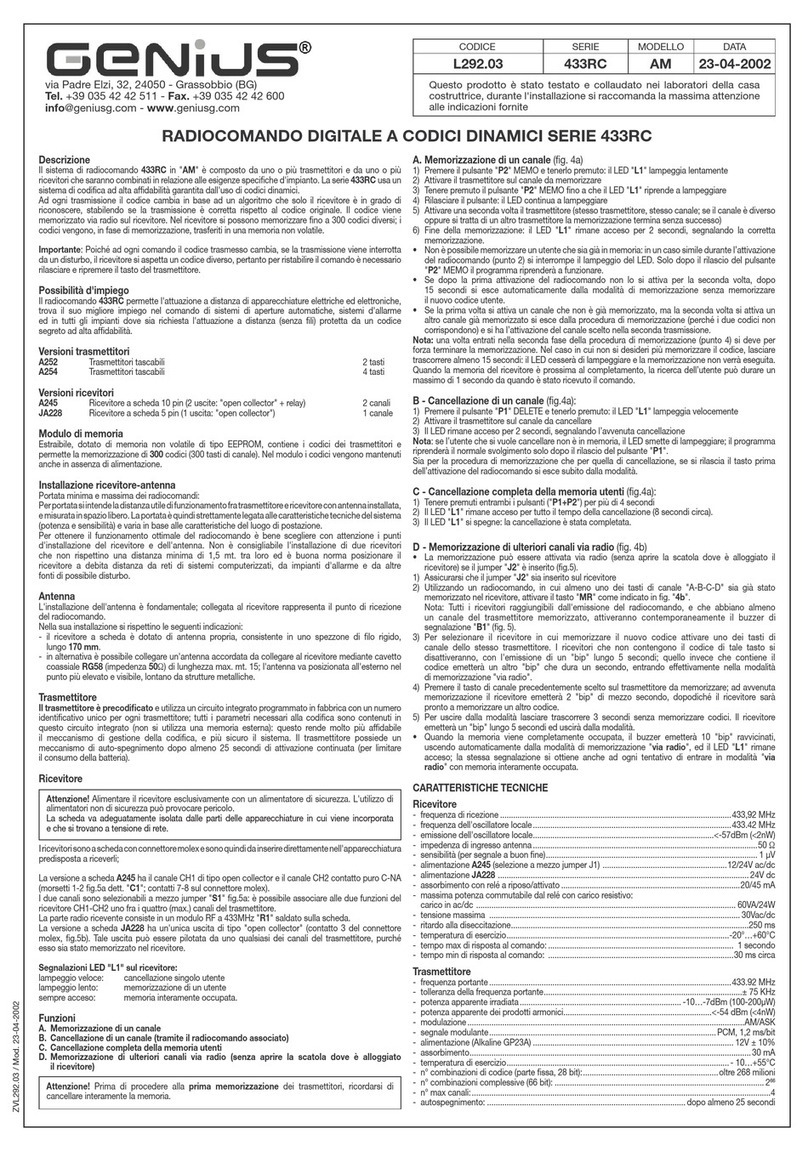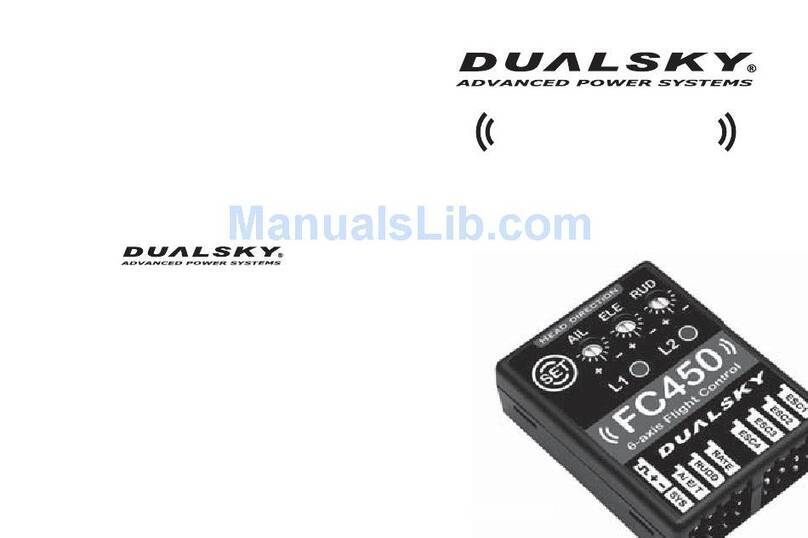Autotrol Performa Ultra User manual

Electronic Control System
Operation and Maintenance Manual
Autotrol Performa Ultra
™
®

2
Table of Contents
Performa Ultra . . . . . . . . . . . . . . . . . . . . . . . . . . . 3
Electronic Demand System . . . . . . . . . . . . . . . . . 3
Special Features
Control Features
Injector Selection
Riser Pipe Assembly
Installation . . . . . . . . . . . . . . . . . . . . . . . . . . . . . . 6
Location Selection
Water Line Connection
Drain Line Connection
Brine Line Connection
Electrical Connection
Initial Brine Tank Fill
Placing Conditioner into Operation . . . . . . . . . . .7
Programming the Performa Ultra. . . . . . . . . . . . . 8
Calendar Override
Changing the System Number
Control Valving Identifications . . . . . . . . . . . . . . 10
Valve Disc Operation . . . . . . . . . . . . . . . . . . . . . 10
Pressure Characteristics . . . . . . . . . . . . . . . . . .10
Specifications . . . . . . . . . . . . . . . . . . . . . . . . . . 12
Flow Diagrams. . . . . . . . . . . . . . . . . . . . . . . . . . 13
Replacement Parts . . . . . . . . . . . . . . . . . . . . . . 15
Valve System Assembly
Bypass Valve
Troubleshooting . . . . . . . . . . . . . . . . . . . . . . . . . 18
Disinfection of Water Conditioners . . . . . . . . . .20

3
Performa Series Ultra Electronic Demand System
The two key components of the Performa Ultra
electronic demand system are the microprocessor, a
miniature computer located on the circuit board, and a
water meter located at the valve outlet. The flow of
conditioned water through the meter generates
electrical impulses that tell the computer the amount of
water being used.
Every evening, at 2:00 a.m., the past 7 days’ water
usage is statistically averaged to anticipate the amount
of water that will be used the next day. The computer
then determines if the water conditioner has enough
remaining capacity to supply the next day’s needs. If
not, the unit will regenerate.
If the water usage pattern changes, the computer
automatically compensates for the change and
regenerates only when needed. This results in higher
operating efficiency and lower salt usage than a
conventional conditioner operating on a fixed
regeneration schedule.
Special Features
Memory Retention
During a power outage, critical operating information in
the control’s memory is stored into the NOVRAM. This
data includes the time of day, water usage amounts,
and the number of days since the last regeneration. The
NOVRAM will retain the data in its memory. When
power is restored, the information is returned to the
microprocessor and operation resumes as if an outage
never occurred.
The time of day will be late by the length of the power
outage. Most power outages are less than one minute
in duration. Therefore, it may be months or years before
the time display would require resetting. If an outage of
one or more hours occurs, the time of day should be
reset...no other reprogramming is necessary.
The microprocessor calculates how much soft water
was used and adjusts the reserve capacity accordingly
at the end of each day. As a result, the reserve is kept
at a minimum for optimum economy.
Proportional Salting
The amount of salt used for each regeneration is
proportional to the amount of capacity used in the
previous service run. Since countercurrent
regeneration is utilized, brine passing through the lower
portion of the partially exhausted resin bed will not be
exchanged. The brine is utilized to regenerate only
the exhausted portion of the resin bed.
Self Adjusting Reserve
“Reserve”refers to the amount of soft water that may
be needed for the next 24 hours. The microprocessor
calculates how much soft water was used and adjusts
the reserve capacity accordingly at the end of each day.
As a result, the reserve is kept at a minimum for
optimum economy. The reserve amount is calculated
by multiplying the average past seven days’usage by
1.20. Regeneration decisions are based on the
calculated reserve.
In the event of unusually high water usage (twice or
more than the current daily average), the high usage
amount will be used as the reserve when the computer
performs its regeneration computation at 2:00 a.m.
This is done in anticipation of a second day of very high
usage.
Low or No Water Usage
The Performa Ultra is programmed to recognize a day
of very little or no water usage as an abnormality. It will
not use data from such a day to compute the average
usage. For example, if the family is on vacation for a
week, the prior average will be maintained. When
household activity resumes, the conditioner will
operate as if the vacation had not occurred.
Design Reliability
Solid-state electronics assure many years of trouble-
free performance. The metering system has only one
moving part... the rotating turbine that measures water
usage.
Control Features (Reference Figure 4)
Time Display
The correct time will continually appear in the time
display during normal conditioning operation.To
change the hour display, press the TIME SET BUTTON
until the present hour appears. The PM light will be on
when the time is between 12 noon and midnight. The
light is off during the a.m. hours.
Flow Indicator
The water flow indicator flashes whenever service
water is flowing through the valve. This allows an easy
determination of proper meter operation.
Hardness and Capacity Settings
Once the hardness and capacity settings have been
set, the information cannot be lost due to a power
outage and no reprogramming is necessary.

4
Guest Cycle
An extra regeneration can be achieved at any time by
pressing the INDICATOR KNOB. It will take a few
minutes for the regeneration to start and the unit will
return to CONDITIONED WATER when regeneration is
completed. This feature is beneficial when you expect
to use more than the normal amount of water, for
example: guest visits, extra heavy laundry days, or if
the unit has been operated without salt in the brine
tank.
Manual Regeneration
Electricity is used only to run the control and rotate the
camshaft. All other functions are operated by water
pressure. Therefore, in the event of a power outage, all
the various regeneration positions may be dialed
manually by pressing the INDICATOR KNOB with a
wide-blade screwdriver and turning
COUNTERCLOCKWISE.
Manual time cycles:
•Refill...5 minutes
•Brine and Rinse...2 hours
•Backwash...12 minutes
•Fast Rinse...4 minutes
Note: DO NOT advance the INDICATOR KNOB directly
to the CONDITIONED WATER position after a manual
regeneration or when servicing the conditioner.
Advance it short of the CONDITIONED WATER position
to just past the FAST RINSE position. The control will
then advance itself to the CONDITIONED WATER
position where the internal switch will turn the motor
off. The internal switch will not be operated and the
motor will continue to run if advanced directly to the
conditioned water position.
If power fails during a conditioner regeneration, the
cycle will be completed normally when the power is
restored.
Injector Selection
There are two injectors shipped with each valve:
•Low pressure, 20 to 60 psi (1.38 to 4.14 bar)
•High pressure, 61 to 120 psi (4.20 to 8.27 bar)
The low pressure injector has been factory installed in
the valve. The high pressure injector is located in a
plastic bag included with the valve. Check the water
pressure to determine which is the correct injector for
your installation.
The injectors are coded according to size by the
number of “bumps”molded onto the end of the
injector. To determine if you are using the correct
injector, check the resin tank diameter from the label on
the back of the valve and refer toTable 1. For the
location of the injector in the valve refer to item 6 in the
Replacement Parts section.
Table 1 - Systems Sizes
System
Number
Tank Size-Dia x Ht Resin Volume Injector (Bumps) Brine Control Backwash
Assembly
Inches Centimeters Cubic Feet Liters Low Pressure
20 to 60 PSI
High Pressure
61 to 120 PSI
07 x 35 18 x 89 .50 14 1032984(2) 1032976(1) 1033286 1000209
7 x 40 18 x 101
1 8 x 35 21 x 89 .66 18.6 1032979(3) 1032984(2)
1000210
28 x 40 21 x 101 .75 21
8 x 44 21 x 112
3 9 x 35 23 x 89 1032977(4) 1032979(3) 1000222 1000211
4 9 x 48 23 x 122 1.00 28.3
5 10 x 35 26 x 89 1032980(5) 1032977(4) 1000212
6 10 x 44 26 x 112 1.25 35.3
6 10 x 47 26 x 119 1.25 35.3 1032980(5) 1032977(4) 1000212
7 10 x 54 26 x 137 1.50 42
8 12 x 48 30 x 122 2.00 56.5 1032982(6) 1032980(5) 1000213

5
Riser Pipe Assembly
The dimensions provided in this section will make it
easy for assemblers to cut the riser pipes and to locate
the center screen when building the softener.
Outside Diameter
Inner Pipe 1.050 ± 0.004 in
26.670 ± 0.100 mm
Outer Pipe 1.315 ± 0.005 in
33.400 ± 0.130 mm
Wall Thickness
Inner Pipe 0.060 + 0.020 in
- .000 in
1.520 + 0.510 mm
- 0.000 mm
Outer Pipe 0.063 + 0.020 in
- 0.000 mm
1.600 + 0.510 mm
- 0.000 mm Figure 1
Table 2 - Injector Selection
Water Pessure
psi, (bar)
Resin Tank Diameter, inches (cm)
7 (18) 8 (21) 9 (23) 10 (25) 12 (30)
20 to 60
(1.38 to 4.14)
61 to 120
(4.20 to 8.27)
Table 3 - Injector Flow Rates
Injector P/N (“Bumps”) Brine Draw Rate Rinse Rate
gpm Lpm gpm Lpm
1032976 (1) 0.091 0.344 0.09 0.34
1032984 (2) 0.071 0.268 0.14 0.53
1032979 (3) 0.089 0.337 0.17 0.64
1032977 (4) 0.154 0.583 0.20 0.76
1032980 (5) 0.165 0.624 0.35 1.32
1032982 (6) 0.176 0.67 0.45 1.70

6
Installation
•All plumbing and electrical connections must
conform to local codes.
•Inspect unit carefully for carrier shortage or
shipping damage.
Location Selection
1. The distance between the unit and a drain should be
as short as possible.
2. If it is likely that supplementary water treatment
equipment will be required, make certain adequate
additional space is available.
3. Since salt must be added periodically to the brine
tank, the location should be easily accessible.
4. Do not install any unit closer to a water heater than
a total run of 10 feet (3 m) of piping between the
outlet of the conditioner and the inlet to the heater.
Water heaters can sometimes overheat to the
extent they will transmit heat back down the cold
pipe into the unit control valve.
Hot water can severely damage the conditioner. A
10-foot (3-m) total pipe run, including bends,
elbows, etc., is a reasonable distance to help
prevent this possibility. A positive way to prevent
hot water flowing from heat source to the
conditioner, in the event of a negative pressure
situation, is to install a check valve in the soft
water piping from the conditioner.
IMPORTANT: If a check valve is installed, make certain
the water heating unit is equipped with a properly rated
temperature and pressure safety relief valve. Also, be
certain that local codes are not violated.
5. Do not locate unit where it or its’connections
(including the drain and overflow lines) will ever be
subjected to room temperatures under 34oF (1oC)
or over 120oF (49oC).
Water Line Connection
The installation of a bypass valve system is
recommended to provide for occasions when the water
conditioner must be bypassed for hard water or for
servicing.
The most common bypass ssytem is the 1265 Bypass
Valve, Figure 2.
Figure 2
Drain Line Connection
1. If ideally located, the unit will be above the drain and
not more than 20 feet (6.1 m) away. For such
installations connect an appropriate fitting and
1/2-inch (1.3 cm) tubing to the 3/4-inch NPT drain
line connection located on the rear of the valve
between the water connections.
2. If unit is located more than 20 feet (6.1 m) from the
drain, use 3/4-inch (1.9 cm) tubing for runs up to
40 feet (12.2 m). Also, purchase an appropriate
fitting to connect the 3/4-inch tubing to the
3/4-inch NPT female drain line connection fitting.
3. If the unit is located where the drain line must be
elevated, you may elevate the line up to 6 feet
(1.8 m) providing the run does not exceed
15 feet (4.6 m) and water pressure at the
conditioner is not less than 40 psi (2.80 bar). You
may elevate the line an additional 2 feet (61 cm) for
each additional 10 psi (7.0 bar) inlet pressure.
4. Where the drain line is elevated but empties into a
drain below the level of the valve, form a
7-inch (18-cm) loop at the end of the line so that the
bottom of the loop is level with the DRAIN LINE
CONNECTION. This will provide an adequate
siphon trap.
5. Where the drain empties into an overhead sewer
line, a sink-type trap must be used.
IMPORTANT: Never insert drain line into a drain, sewer
line or trap. Always allow an air gap between the drain
line and the wastewater to prevent the possibility of
sewage being back-siphoned into the conditioner.
Not in Bypass In Bypass
Conditioner Conditioner
Water Water
In Out In Out

7
Figure 3
Note: Standard commercial practices have been
expressed here. Local codes may require changes to
these suggestions.
Brine Line Connection
Install an appropriate length of 3/8-inch OD flexible
plastic tubing (polyethylene) between the tube fitting on
the brine valve (in the brine tank) and the tube fitting on
the valve.
Electrical Connection
Plug the wall mount transformer into a wall outlet that
is not controlled by a switch. Plug the male “barrel
connector”into the bottom of the control.
Initial Brine Tank Fill
With a bucket or hose, add just enough conditioned
water to the brine tank to cover the screen located at
the end of the air check assembly at the bottom of the
brine tank.
Placing Conditioner into Operation
After all previous steps have been completed, the unit
is ready to be placed into operation. Follow these steps
carefully.
1. Remove the valve cover.
Note: The following steps will require turning the
indicator knob on the control, (Figure 4), to various
positions. Insert a wide blade screwdriver into the
arrow slot in the indicator knob and press in firmly. With
knob held in, rotate counterclockwise only until arrow
on knob points to desired position. (Rotation is made
much easier if you grasp the camshaft with your free
hand and turn it at the same time.) Then permit knob to
spring back out.
2. Insert screwdriver into slot in the indicator knob.
Press in and rotate the knob counterclockwise
until the arrow points directly to the word
Backwash.
3. Fill mineral tank with water.
a. With water supply off, place the bypass
valve(s) slowly into the not-in-bypass position.
b. Open water supply valve very slowly to
approximately the 1/4 open position.
IMPORTANT: If opened too rapidly or too far, mineral
may be lost. In this position, you should hear air
escaping slowly from the drain line.
c. When all of the air has been purged from the
mineral tank (water begins to flow steadily from
the drain), close the main supply valve.
d. With the water supply off, let the unit stand for
5 minutes. This will allow all trapped air to
escape from the tank.
4. Open the water supply valve slowly to the fully
opened position.
5. Carefully advance the indicator knob
counterclockwise to the center of the fast rinse
position and remove the screwdriver. The control
will advance to the conditioned water position by
itself.
Programming the Performa Ultra
1. Plug the wall mount transformer into a functioning
electrical outlet that is not controlled by a switch.
Plug the transformer plug into the transformer plug
receptacle on the control.
Note: If the included transformer cord is not long
enough, a 15-foot extension is available.
Figure 4
PM Indicator
Hour Time Display Water Flow Indicator
Jumper Header
Indicator Knob
Time Set Button Spare Jumper
Access Door
Transformer Plug Receptacle

8
2. Remove the access door by flexing the removal tab
to the left (as facing the control) then gently pulling
the tab and door out and off the control (Figure 4).
3. With the jumper on the pins marked TIME
(Figure 5), set the time of day to the closest hour by
depressing the black TIME SET BUTTON. PM
hours are indicated by a light next to the letters PM
on the display window.
NOTE: The unit is factory set to regenerate at
2 a.m. If you prefer to have the unit regenerate at
an earlier or later time, simply set the current time
of day accordingly.
Example: To have the unit regenerate at 4 a.m.,
2 hours later, set the clock 2 hours earlier than the
actual current time.
4. Pull the jumper off the TIME pins and place it on
the pins marked HARDNESS (Figure 6). Press the
black TIME SET BUTTON until the correct
hardness is displayed. The hardness range is from
1 to 99 grains per gallon. To change water hardness
stated in parts per million (ppm), to grains per
gallon (gpg), use this formula:
Parts Per Million = Grains Per Gallon
17.1
5. Place the jumper on the pins marked CAPACITY
(Figure 7). Press the black TIME SET button until
the correct capacity value is displayed. The
capacity range is 6 to 47 kilograins. Refer to the
Salt and Capacity Setting chart (Table 4).
6. Place the jumper on the pins marked LBS of SALT
(Figure 8). Press the black TIME SET button until
the correct salt value is displayed. The salt range is
1 to 30 pounds. Refer to the Salt and Capacity
Setting chart (Table 4).
7. Return the jumper to the pins marked TIME and
close the access door. The pins marked A and B
are used for factory testing and are not used in
normal operation. The jumper must NOT be left
on any pins other than the pins next to the word
TIME. Failure to do this will cause the unit not to
operate. Please note that a spare jumper is located
in the position marked SPARE.
In the event that the hardness, capacity or salt setting
must be changed, simply follow steps 2 through 7.
Calendar Override
The override will initiate a regeneration at the
programmed interval if the water usage has not been
enough to initiate regeneration. For example, if a 463i
unit is programmed with a 10-day calendar override
and the home owner goes on vacation, after 10 days of
no usage, the system will regenerate automatically.
To set the calendar override:
1. Disconnect the power.
2. Move the jumper from the TIME pins to the Apins,
and reconnect the power.
3. Move the same jumper to the B pins. One zero will
appear, indicating zero days of calendar override.
All 463i units are preprogrammed in this manner.
4. Depress the TIME SET button. The numbers will
roll from 0 to 15. Release the button at the desired
number of days for the calendar override. For
example, releasing the button at 10 would program
a 10 day calendar override.
5. Disconnect the power.
6. Place the jumper back on the TIME pins and
reconnect the power.
The calendar override is maintained during power
outages by the NOVRAM circuitry. To remove the
calendar override, follow the same steps above and
program back to 0.
Figure 5 Figure 6
Figure 7 Figure 8

9
*In most cases, proportional brining will provide higher working efficiencies than standard brining.
Note: Settings other than those listed will result in improper operation of the water conditioner.
1 - Determine the system size based on the tank size and resin volume.
2 - Select the salt setting. Using lower pounds of salt offers greater salt efficiency than higher salt settings.
3 - Determine the capacity of the water conditioner by reading the cross point of the salt setting and system
number. Example: Salt Setting = 4 lbs., System No = 3, Capacity setting = 12,000 grains
Table 4 - Salt and Capacity Settings *
Salt
Setting
(lbs.)
System
0
System
1
System
2 & 3
System
4 & 5
System
6
System
7
System
8
2 6,000 8,000 8,000
3 8,000 9,000 10,000 11,000
4 10,000 11,000 12,000 14,000 15,000 16,000
5 10,000 13,000 13,000 16,000 17,000 18,000 21,000
6 11,000 13,000 14,000 18,000 20,000 20,000 23,000
7 12,000 14,000 15,000 19,000 21,000 22,000 24,000
8 13,000 15,000 16,000 21,000 22,000 24,000 26,000
9 16,000 17,000 22,000 24,000 26,000 28,000
10 17,000 18,000 24,000 26,000 28,000 29,000
11 25,000 28,000 30,000 31,000
12 26,000 29,000 31,000 33,000
13 30,000 32,000 34,000
14 31,000 34,000 36,000
15 32,000 36,000 38,000
16 33,000 37,000 39,000
17 38,000 40,000
18 39,000 40,000
19 40,000 41,000
20 41,000
21 42,000
22 42,000
23 43,000
24 44,000
25 44,000
26 45,000
27 45,000
28 46,000
29 46,000
30 47,000

10
Changing the System Number
1. Place one jumper on HARDNESS and one on LBS
of SALT.
2. Press TIME SET Button (Figure 4) until desired
system number (Table 1) is displayed.
3. Remove jumpers. Place one jumper on TIME pins
and one jumper on SPARE jumper pins (Figure 5).
Control Valving Indentifications
Figure 9
Valve Disc Operation
Figure 10
Removing 463i for Servicing
1. Unplug the power cord.
2. Remove cover.
3. Align the indicator arrow on the rear of the
camshaft with the top of the rear hoop of the top
plate (Figure 11).
Figure 11
4. Remove the camshaft by carefully pushing the
securing tab, located at the rear of the camshaft,
away from the camshaft until the tab disengages
from the camshaft. Push the back of the camshaft
down and out to the inlet side of the valve
(Figure 12).
Figure 12
5. Disengage the front of the camshaft from the
output gear of the control.
6. Remove the timer locking pin and lift the control
straight up and off of the valve.
7. To reinstall the camshaft and control, reverse the
above procedures.
1 Brine Valve
2 Bypass Valve
3 Inlet Valve
4 Outlet Valve
5 2nd T a nk T a p
7 Backwash Drain Valves
6 Rinse Drain
Valve
Indicator Arrow

11
Preventive Maintenance
Injector Screen and Injector
Inspect and clean brine tank and screen filter on end of
brine pickup tube once a year or when sediment
appears in the bottom of the brine tank.
Clean injector screen and injector once a year.
1. Unplug the wall-mount transformer.
2. Shut off water supply or put bypass valve(s) into
bypass position.
3. Relieve system pressure by opening valve No. 7 (at
rear) with a screwdriver.
4. Using a screwdriver, remove injector screen and
injector cap (Figure 13).
5. Clean screen using a fine brush. Flush until clean.
6. Using a needle-nose pliers, pull injector straight
out.
7. Flush water into the injector screen recess of the
valve body to flush debris out through the injector
recess.
8. Clean and flush the injector.
9. Lubricate the O-rings on the injector, injector cap
and injector screen with silicone lubricant only!
10. Reinstall the injector, injector cap and injector
screen.
IMPORTANT: Do not overtigtten the plastic cap. Seat
the cap lightly into position. Overtightening may cause
breakage of the plastic cap that may not be
immediately evident.
11. Plug the wall-mount transformer into outlet; reset
clock if necessary.
12. Slowly open water supply valve or return bypass
valve(s) to the “service”position.
Figure 13
Injector
Injector Screen
Cap
Tur bine

12
Specifications
Hydrostatic Test Pressure . . . . . . . . . . . . . . . . . . . . . . . . . . . . . . . . . . . . . . . . . . . . . . . . . . . . . . . . 300 psi (20.69 bar)
Working Pressure. . . . . . . . . . . . . . . . . . . . . . . . . . . . . . . . . . . . . . . . . . 20-120 psi (100 psi Canada) (1.38 - 8.62 bar)
Standard Electrical Rating . . . . . . . . . . . . . . . . . . . . . . . . . . . . . . . . . . . . . . . . . . . . . . . . . . . . . . . . . . . . . . 115V 60 Hz
Optional Electrical Rating . . . . . . . . . . . . . . . . . . . . . . 115V 50 Hz, 230V 50 Hz, 200V 60 Hz, 24V 60 Hz, 24V 50 Hz,
100V 60 Hz, 100V 50 Hz, 12V 50 Hz/transformer, 12V 60 Hz/transformer
Electrical Cord (standard rating) . . . . . . . . . . . . . . . . . . . . . . . . . . . . . . . . . . . . . . . . . 60 inch (1.5 m) 3-wire with plug
Pressure Tank Thread . . . . . . . . . . . . . . . . . . . . . . . . . . . . . . . . . . . . . . . . . . . . . . . . . . . . . . . . . . . . 2 1/2 inch-8 male
Riser Pipe Required . . . . . . . . . . . . . . . . . . . . . . . . . . . . . . . . . . . . . . . Special, refer to Riser Pipe Assembly section
Standard Connection . . . . . . . . . . . . . . . . . . . . . . . . . . . . . . . . . . . . . . . . . . .1-inch (25.4-mm) copper tube adapters
Optional Connections . . . . . . . . . . . . . . . . . . . . . . . . . . . . . . . . .3/4-inch, 22-mm, and 28-mm copper tube adapters
3/4-inch BSPT, 1-inch BSPT, 1-inch NPT brass pipe adapters
3/4-inch, 1-inch, 25-mm CPVC tube adapters
Brine Line Connection . . . . . . . . . . . . . . . . . . . . . . . . . . . . . . . . . . . . . . . . . . . . . . . . . . . . . . . . . . . 3/8-inch NPT male
Drain Line Connection . . . . . . . . . . . . . . . . . . . . . . . . . . . . . . . . . . . . . . . . . . . . . . . . . . . . . . . . . . . 3/4-inch NPT male
Optional Bypass Valve. . . . . . . . . . . . . . . . . . . . . . . . . . . . . . . Rotating handles, full 1-inch porting, reinforced Noryl*
Control Module, Tank Adapter. . . . . . . . . . . . . . . . . . . . . . . . . . . . . . . . . . . . . . . . . . . . . . . . . . . . . . .Reinforced Noryl
Rubber Goods . . . . . . . . . . . . . . . . . . . . . . . . . . . . . . . . . . . . . . . . . . . . . . . . . . Compounded for cold water service
Brine Refill Control. . . . . . . . . . . . . . . . . . . . . . . . 0.14 gpm (.53 Lpm), 0.33 gpm (1.25 Lpm), or 0.40 gpm (1.51 Lpm)
Injectors. . . . . . . . . . . . . . . . . . . . . . . . . . . . . . . . . . . . . . . . . . . . . . . . . . . . . . . . . . . Reference Table 1 System Sizes
Internal Backwash Controllers. . . . . . . . . . . . . . . . 7- through 12-inch (17.8- though 30.5-cm) diameter media tanks
All sizes to flow 4.5 gpm/sq ft (183 L/m/m2) of bed area
*Noryl is a trademark of General Electric Company.
3.37-inch (86 mm) 3.66-inch (93 mm) 5.76 inch (146 mm) 5.82 inch (148 mm)
2.88 inch (73 mm)
2.5 inch (63 mm)
2.5 inch (63 mm)
11.59 inch (294 mm)
1.356 inch (34 mm)
8.74 inch (222mm)
Inlet
Outlet
Drain

13
Flow Diagrams
Drain
Inlet
Outlet
Brine
Adjustment
Name
Brine
By-Pass
Inlet
Outlet
2nd Tank Top
Purge
Backwash
1 Service Position
Valve
No.
1 - Closed
2 - Closed
3 - Open
4 - Open
5 - Closed
6 - Closed
7 - Closed
Brine Tank
2 Refill Position
Drain
Inlet
Outlet
Brine
Adjustment
Brine Tank
Name
Brine
By-Pass
Inlet
Outlet
2nd Tank Top
Purge
Backwash
Valve
No.
1 - Open
2 - Closed
3 - Open
4 - Open
5 - Closed
6 - Closed
7 - Closed
3 Brine/Slow Rinse Position
Drain
Inlet
Outlet
Brine
Adjustment
Brine Tank
Name
Brine
By-Pass
Inlet
Outlet
2nd Tank Top
Purge
Backwash
Valve
No.
1 - Open
2 - Open
3 - Closed
4 - Closed
5 - Open
6 - Closed
7- Closed

14
Name
Brine
By-Pass
Inlet
Outlet
2nd Tank Top
Purge
Backwash
Valve
No.
1 - Closed
2 - Open
3 - Open
4 - Closed
5 - Closed
6 - Open
7 - Closed
5 Purge Position
Drain
Inlet
Outlet
Adjustment
Brine Tank
Brine
Drain
Inlet
Outlet
Brine
Adjustment
Brine Tank
4 Backwash Position
Valve
No.
1 - Closed
2 - Open
3 - Closed
4 - Open
5 - Closed
6 - Closed
7 - Open
Name
Brine
By-Pass
Inlet
Outlet
2nd Tank Top
Purge
Backwash

15
2
Replacement Parts
4
5
14
9
316
7
10
11
5
8
12
12
13
Valve System Assembly

16
Parts List
* Not Shown
Code
Part
No. Description Qty. Code
Part
No. Description Qty.
1 1035610 Valve Assembly, w/o Flow Controls 1 8 Brine Refill Control: 1
2 1035626 Camshaft: Tan 1 1000222 0.33 gpm Flow Control
3 1031391 Timer Locking Pin 1 9 1000226 Screen/Cap Assembly 1
4 Drain Control Assembly: 1 10 1010429 O-Ring 1
1000209 No. 7 (1.2 gpm; 4.5 Lpm) 11 1035622 Tank Ring 1
1000210 No. 8 (1.6 gpm; 6.1 Lpm) 12 Plumbing Adapter Kits: 1
1000211 No. 9 (2.0 gpm; 7.6 Lpm) 1001606 3/4-inch Copper Tube Adapter Kit
1000212 No. 10 (2.5 gpm; 9.5 Lpm) 1001670 1-inch Copper Tube Adapter Kit
1000213 No. 12 (3.5 gpm; 13.2 Lpm) 1001608 22-mm Copper Tube Adapter Kit
5 1030502 Ball, Flow Control 2 1001609 28-mm Copper Tube Adapter Kit
6 Injector Assembly: 1 1001613 3/4-inch CPVC Tube Adapter Kit
1032976 Reference Table 1-System Sizes for 1001614 1-inch CPVC Tube Adapter Kit
Injector Selection (1 Bump) 1001615 25-mm CPVC Tube Adapter Kit
1032977 Reference Table 1-System Sizes for 1001769 3/4-inch NPT Plastic Pipe Adapter Kit
Injector Selection (2 Bumps) 1001603 1-inch NPT Plastic Pipe Adapter Kit
1032979 Reference Table 1-System Sizes for 1001604 3/4-inch BSPT Plastic Pipe Adapter Kit
Injector Selection (3 Bumps) 1001605 1-inch BSPT Plastic Pipe Adapter Kit
1032980 Reference Table 1-System Sizes for 1001611 3/4-inch BSPT Brass Pipe Adapter Kit
Injector Selection (4 Bumps) 1001610 1-inch NPT Brass Pipe Adapter Kit
1032982 Reference Table 1-System Sizes for 1001612 1-inch BSPT Brass Pipe Adapter Kit
Injector Selection (5 Bumps) 13 1033444 Turbine Assembly 1
1032984 Reference Table 1-System Sizes for 14 1001580 Spring, Flapper Valve 1
Injector Selection (6 Bumps) * Valve Disc Kit:
7 1032985 Injector Cap Assembly 1 1041174 Standard
1041175 Severe Service
* 1000062 I-Lid Cover 1

17
463i Control
1
B
Y
P
A
S
S
B
Y
P
A
S
S
Code
Part
No. Description Qty.
11030070 463i Control 1
21040930 1265 Bypass 1
* 1000811 Transformer 1
* 1000907 Transformer Extension Cord 1
15 feet (4.6 m)
* 1034264 Y-Splitter (run 2 units from 1
1 transformer)
2
*Not Shown
1265 Bypass

18
Troubleshooting
Your water conditioning system is designed and
manufactured for efficient, low maintenance service.
However, if problems occur, this section provides a list
of possible causes and solutions.You can solve some
problems yourself, such as low salt in the salt storage
tank or a blown household fuse. However, some
problems require installer or dealer assistance.
IMPORTANT: Service procedures that require the
water pressure to be removed from the system are
marked with a !after the possible cause. To remove
water pressure from the system, put the bypass valve
or three-valve bypass into the bypass position and
open the backwash drain valve (the seventh valve back
from the control) with a screwdriver. Restore system
water pressure when the service work is completed.
Problem Possible Cause Solution
1. Clock does not display time of
day.
a. Transformer cord unplugged.
b. No electric power at outlet.
c. Defective transformer.
a. Connect power.
b. Repair outlet or use working outlet.
c. Replace transformer.
2. Clock does not display correct
time of day.
a. Outlet operated by switch.
b. Incorrect voltage or frequency (Hz).
c. Power outages.
a. Use outlet not controlled by switch.
b. Replace control with one of correct voltage
and frequency (Hz).
c. Reset clock.
3. Time display shows
something other than time of
day.
a. Electrical interference. a. Disconnect power to unit. Restore power and
reset time of day display.
4. No water flow display when
water is flowing.
a. Bypass valve in bypass.
b. Meter probe disconnected or not fully
connected to meter housing.
c. Restricted meter turbine rotation due to
foreign materal in meter !
a. Shift bypass valve to not-in -bypass position.
b. Fully insert probe into meter housing.
c. Remove meter housing, free up turbine and
flush with clean water. Do not disassemble
turbine from meter housing. Turbine should
spin freely. If not, replace meter.
5. Control regenerates at wrong
time of day.
a. Power outages.
b. Clock set incorrectly.
a. Reset clock to correct time of day.
b. Reset clock to correct time of day.
6. Control stalled in regeneration
cycle.
a. Coltroller in dwell period.
b. No electric power at outlet.
c. Air leak in brine connections.
d. Binding of camshaft.
e. Water pressure greater than 125 psi
during regeneration.
f. Defective circuit board !
a. Wait for period to end. Wait 20 min. for unit to
reset.
b. Repair outlet or use working outlet.
c. Check all junction points and make
appropriate corrections.
d. Remove obstruction from valve discs or
camshaft.
e. Install pressure regulator.
f. Replace control.
7. Control will not regenerate
automatically or when button
is pressed.
a. Electric cord or transformer unplugged.
b. No electric power at outlet.
a. Connect power.
b. Repair outlet or use working outlet.
8. Control will not regenerate
automatically but will
regenerate when button is
pressed.
a. If water flow display is not operative, refer
to Item 4.
b. Incorrect hardness and capacity settings.
a. Same as Item 4.
b. Set to correct values. See Programming
section.
9. Run out of soft water between
regenerations.
a. Improper regeneration.
b. Fouled softener resin.
c. Incorrect salt setting.
d. Incorrect hardness or capacity settings.
e. Water hardness has increased.
f. Restricted meter turbine rotation due to
foreign material in meter !
g. Excessive water usage below 1/5 gallon
per minute.
a. Repeat regeneration, making certain that
correct salt dosage is used.
b. Use resin cleaner. See Note 1.
c. Set salt control to proper level. See salt setting
chart.
d. Set to correct values. See programming
section.
e. Set hardness to new value. See Programming
section.
f. Remove meter housing, free up turbine and
flush with clean water. Do not disassemble
turbine from meter housing. Turbine should
spin freely, if not, replace meter.
g. Repair leaky plumbing and/or fixtures.

19
Note 1: The use of resin cleaners in an unvented
enclosure is not recommended. This may cause
damage to the control.
10. Valve will not draw brine. a. Low water pressure.
b. Restricted drain line.
c. Injector plugged !
d. Injector defective !
e. Valve (2 and/or 3) not closed.
f. Air check prematurely closed.
a. Make correct setting according to instructions.
b. Remove restriction.
c. Clean injector and screen.
d. Replace injector and cap.
e. Flush out foreign matter holding disc(s) open
by manually operating valve stem(s).
f. Put control momentarily into brine refill.
Replace or repair air check if needed.
11. Brine tank overflow. a. Brine valve disc 1 being held open by
foreign matter.
b. Uncontrolled brine refill flow rate.
c. Valve disc 2 and/or 3 not closed during
brine draw causing brine refill.
d. Air leak in brine line to air check.
e. Drain flow control clogged with resin or
other debris.
a. Manually operate valve stem to flush away
obstruction.
b. Remove variable salt control to clean it and the
ball.
c. Flush out foreign matter holding disc(s) open
by manually operating valve stem(s).
d. Check all connections in brine line for leaks.
Refer to instructions.
e. Clean drain flow control.
12. System using more or less salt
than salt control is set for.
a. Inaccurate setting.
b. Foreign matter in controller causing
incorrect flow rates !
c. Defective salt control.
a. Make correct setting.
b. Remove variable salt control and flush out
foreign matter. Manually position control to
brine draw to clean salt control (after so doing,
position control to “purge”to remove brine
from tank).
c. Replace defective part.
13. Intermittent or irregular brine
draw.
a. Low water pressure.
b. Defective injector !
c. Air leak in brine line to air check.
a. Set pump to maintain at least 20 psi at
softener.
b. Replace both injector and injector cap.
c. Check all connections in brine line for leaks.
Refer to instructions.
14. No conditioned water after
regeneration.
a. Unit did not regenerate.
b. No salt in brine tank.
c. Plugged injector !
d. Air check closed prematurely.
a. Check for power.
b. Add salt to brine tank.
c. Remove injector and flush it and injector
screen.
d. Put control momentarily into refill to free air
check. Replace or repair air check if needed.
15. Control backwashes at
excessively low or high rate. a. Incorrect backwash flow control used !
b. Foreign matter affecting flow control
operation !
a. Replace with correct size flow control.
b. Remove flow control and clean it and the ball.
16. Flowing or dripping water at
drain or brine line after
regeneration.
a. Drain valve discs (5 or 6) or brine valve
disc (1) held open by foreign matter.
b. Valve stem return spring on top plate
weak.
a. Manually operate valve stem to flush away
obstruction.
b. Replace spring.
17. Hard water leakage during
service.
a. Improper regeneration.
b. Leaking of bypass valve !
c. O-ring around riser tube
damaged !
a. Repeat regeneration making certain that the
correct salt dosage is set.
b. Replace O-ring.
c. Replace O-ring.

20
Disinfection of Water Conditioners
The construction materials of the Water Conditioning
System do not support bacterial growth or contaminate
the water supply. However, we recommend that your
conditioner be disinfected after installation and before
the conditioner is used to treat potable water. In
addition, a conditioner can become fouled with organic
matter during normal usage or with bacteria from the
water supply. Periodic disinfection is recommended for
all conditioners.
Use one of the following methods of disinfection based
on operating conditions, style of conditioner, type of ion
exchanger, and disinfectant available.
Sodium Hypochlorite
Sodium Hypochlorite, 5.25% solutions, can be used
with polystyrene resin, synthetic gel zeolite, greensand,
and bentonites and are available under trade names
such as Chlorox*. Adjust the dosage if stronger
commercial solutions are used.
The recommended dosage for 5.25% solutions is:
•Polystyrene resin: 1.2 fluid ounces per cubic foot.
•Non-resinous exchangers: 0.8 fluid ounce per
cubic foot.
Calcium Hypochlorite
Calcium hypochlorite, 70% available chlorine, is
available in several forms including tablets and
granules. These solid materials can be used directly
without dissolving before application. The
recommended dosage for calcium hypochlorite is two
grams (approximately 0.1 ounce) per cubic foot.
Complete the following steps to disinfect the
conditioner:
•Add the disinfectant to the brine well of the brine
tank. Make sure that the brine tank has water in it
so the solution is carried into the conditioner.
•Initiate a regeneration.
*Clorox is a registered trademark of The Clorox Company.
Table of contents
Other Autotrol Control System manuals
Popular Control System manuals by other brands
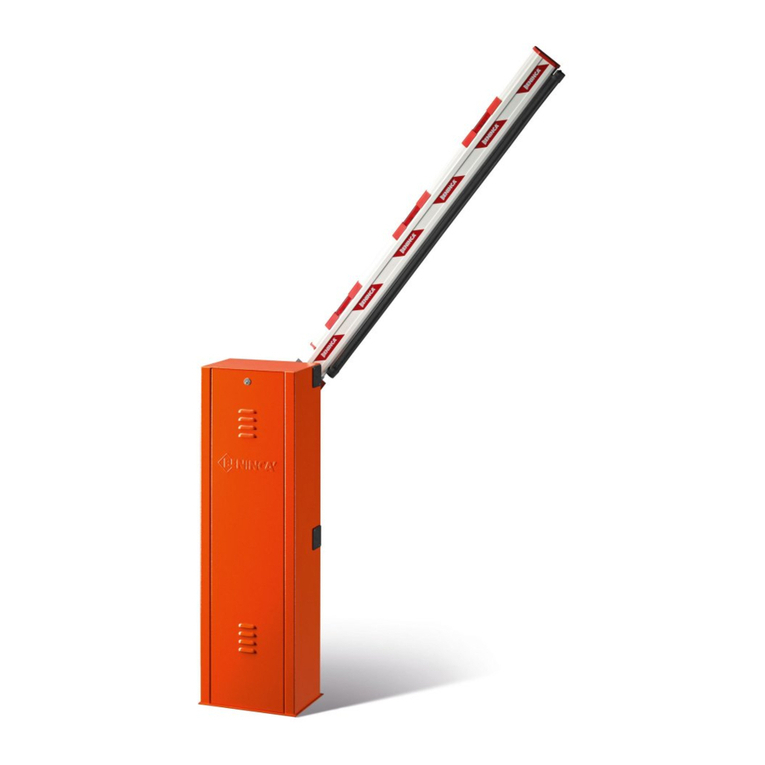
Beninca
Beninca VE.500 Operating instructions and spare parts catalogue

Steridose
Steridose sterimixer Startup guide

Carrier
Carrier PIC 5+ user manual
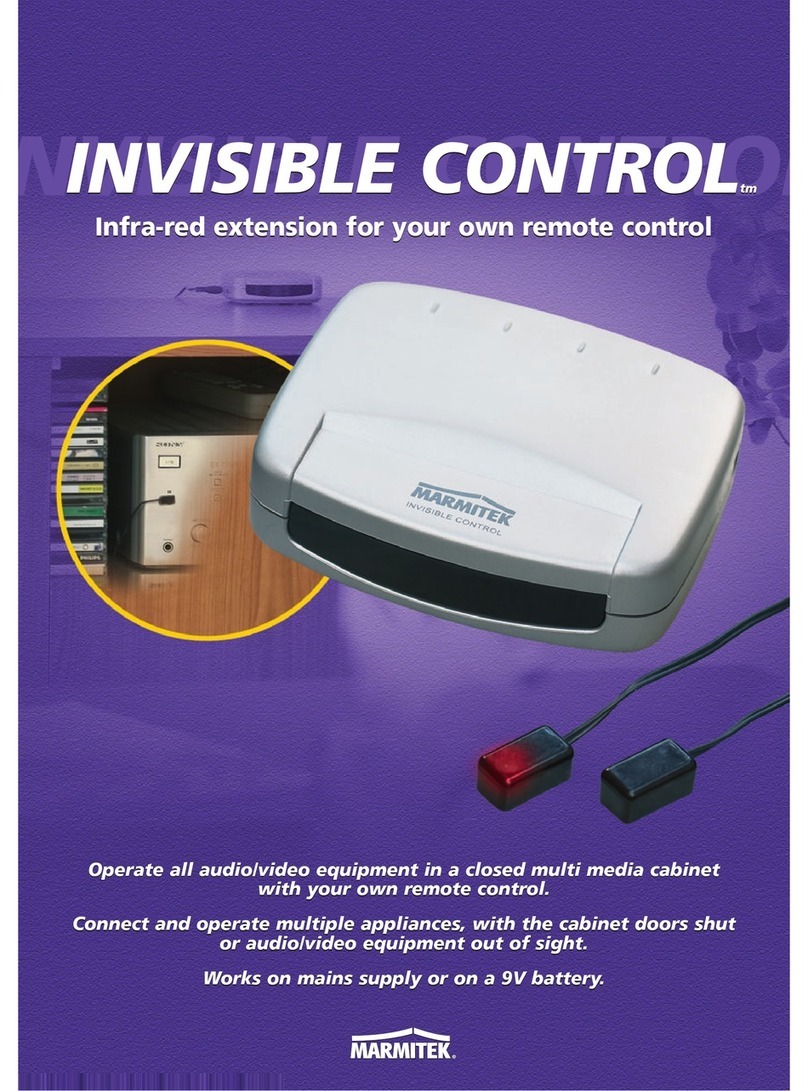
Marmitek
Marmitek 9681 brochure
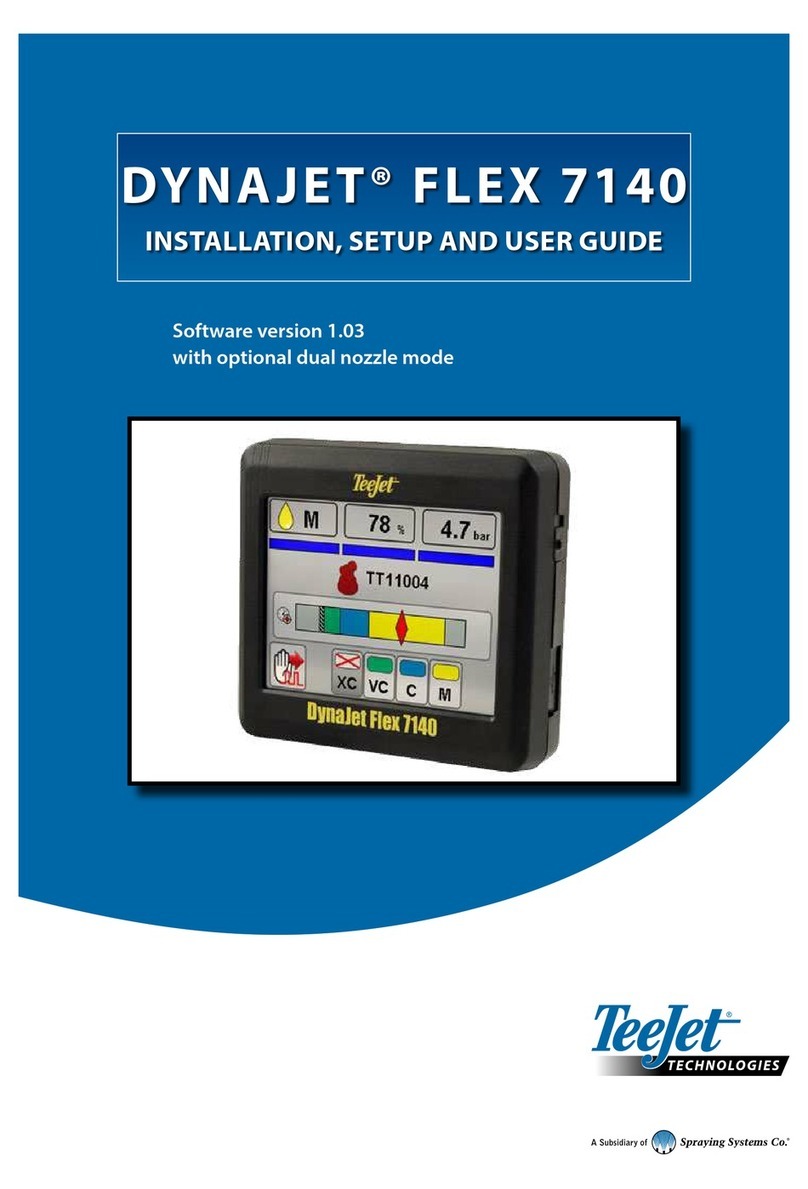
TeeJet Technologies
TeeJet Technologies Dynajet FLEX 7140 INSTALLATION, SETUP AND USER GUIDE

Balboa
Balboa Hydro Air 20-0244 quick start guide
